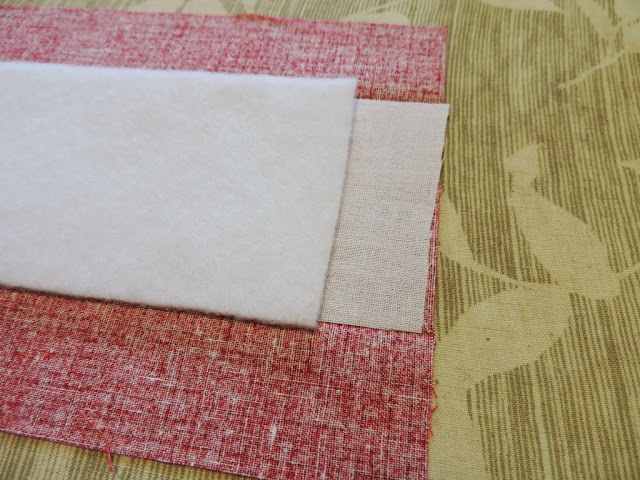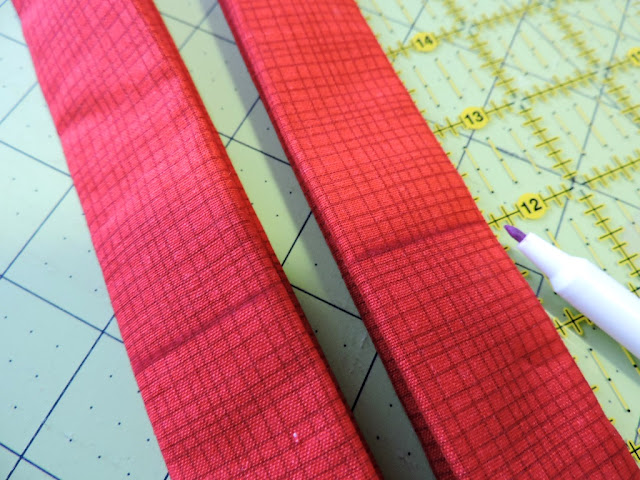Assembling the Exterior
Mark the bottom center of the front and back bag pieces, as well as the center of your gusset. With right sides together (let's start with the back piece), match those center points and pin/clip. Starting at the center and working around one side of the bag, pin the gusset in place (I recommend a lot of pins around that curve) up one side. Repeat from the center towards the other side of the bag. I find that no matter how careful I am, I sometimes need to ease one into the other, or trim my gusset at the very end, so don't panic if this happens to you. If you need to adjust I do recommend trying to keep the side pockets even with each other.
With the gusset facing up (it's easier to get neat corners this way), stitch all the way around. Note: there is no seam allowance here. If you've omitted piping use a 1/4" seam allowance. If you haven't just stitch to accommodate the piping. But look what we have here amidst our bulky piping trying to keep us from getting a neat seam:
A happy little stitch line to follow along! So as long as you keep that in sight as your guide everything should end up hunky dory!
Repeat for the back of the bag and the gusset. And boom. Your exterior is finished.
If you are not adding a zipper, you can stop reading as that's what we're doing now, and we'll see you for the lining! But this zipper is painless, I promise.
The Zipper Casing
Grab one of your zipper casings. Fold and press each short edge in one-half inch. Then press in half lengthwise.
Unfold, then fold the raw edges towards that center crease and press (just like we did for the straps).
Repeat for the other casing. Get your zipper. Sandwich the casing around it. Don't get too close to the teeth so your pull doesn't get stuck.
I like to sew around three of the four sides (the two short ones and the one nearest the coils). So I stitch as close to the edge as I can, starting on a short edge where the fold is--
Stitch to about 1/8 inch away from the edge, put my needle down, and pivot. Then sew down the length of the zipper.
Then stop, pivot, and sew the other short edge.
Repeat with the other casing, getting them as even as you can. Now take those two little squares we cut. Those are going to be our zipper tabs. Fold each short edge in about a quarter inch.
Fold, right sides together, short (folded) end to short (folded) end, and sew each side with a 1/4 inch seam allowance.
Apologies for this blurry photo. You get the idea, but still, did I sneeze when I took it or something?
See where my pin is? That's where I cut my zipper tape. Then stick the end of your tape into the tab--
--and stitch closed.
Now this is what you have--
I'll see you next time for the lining!























































